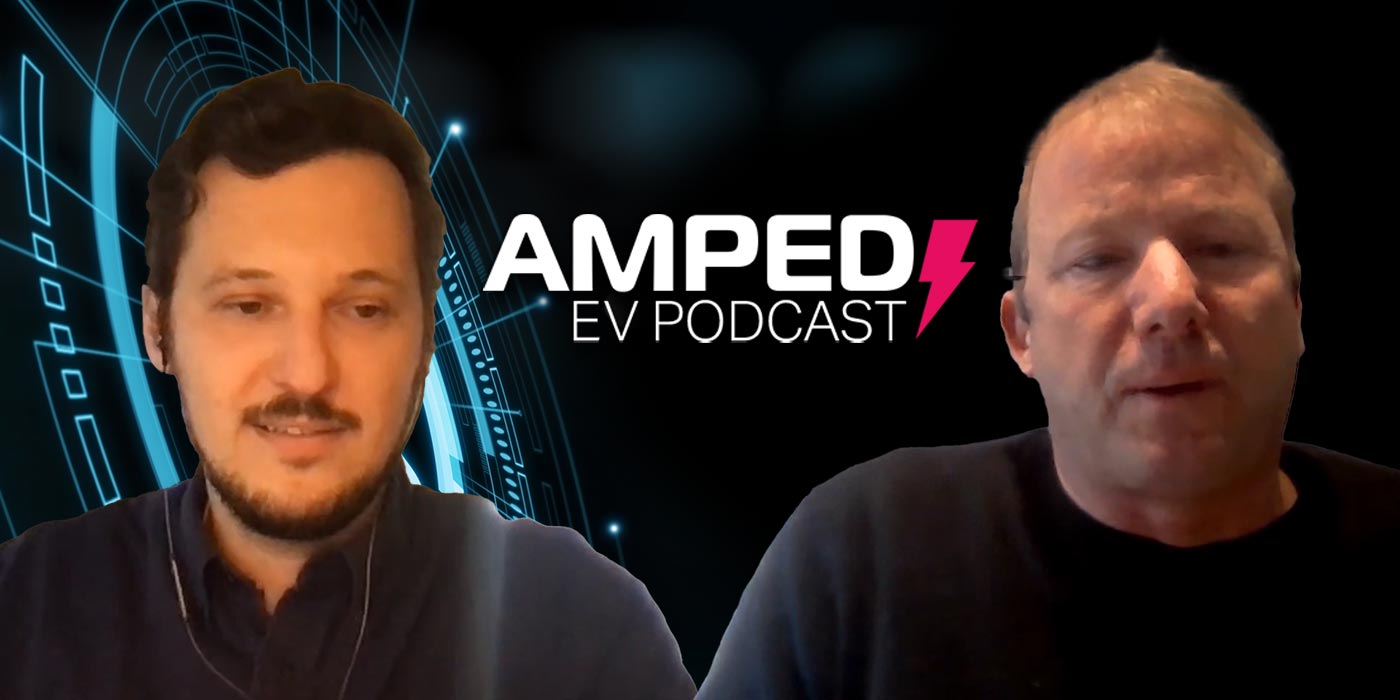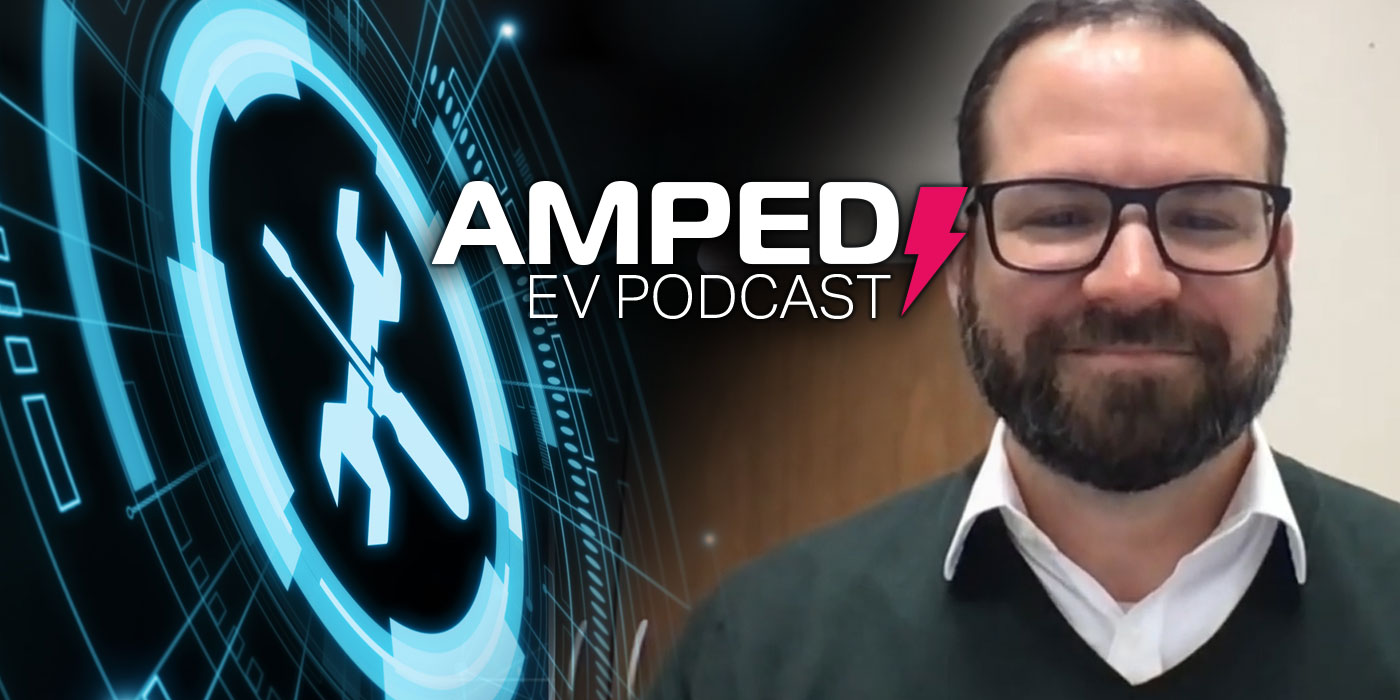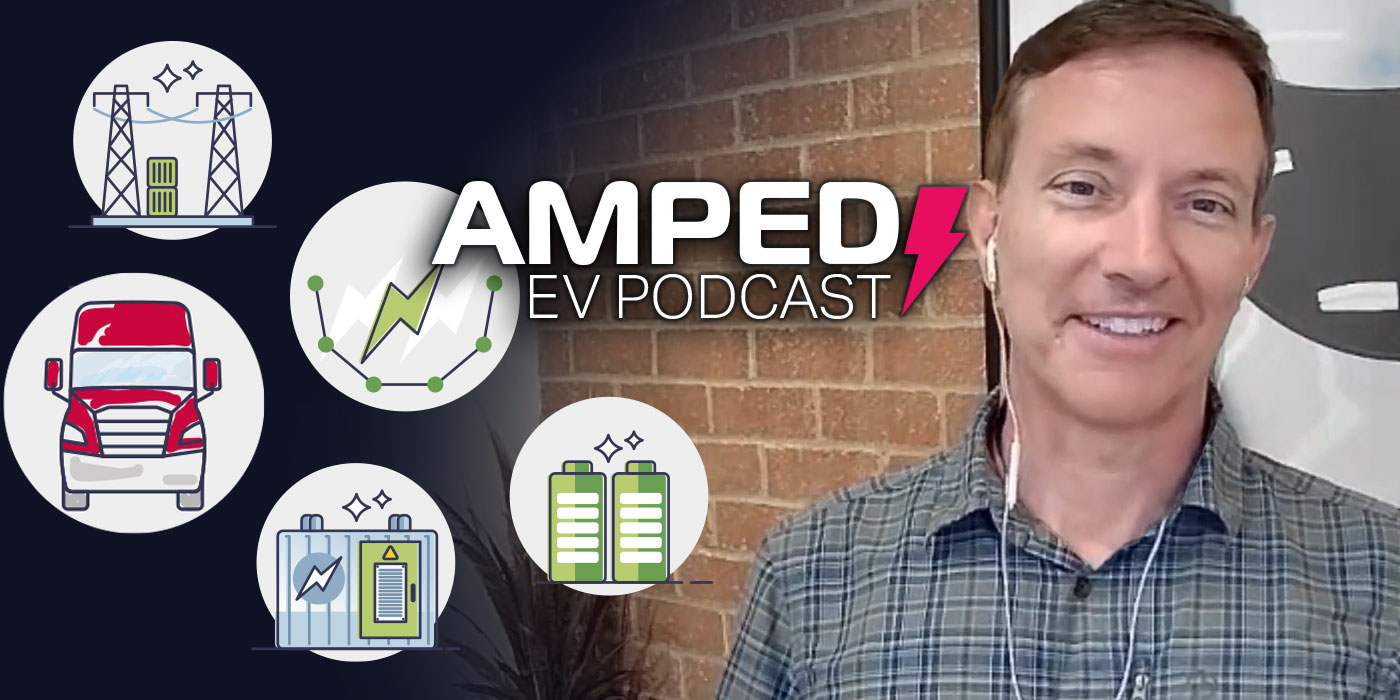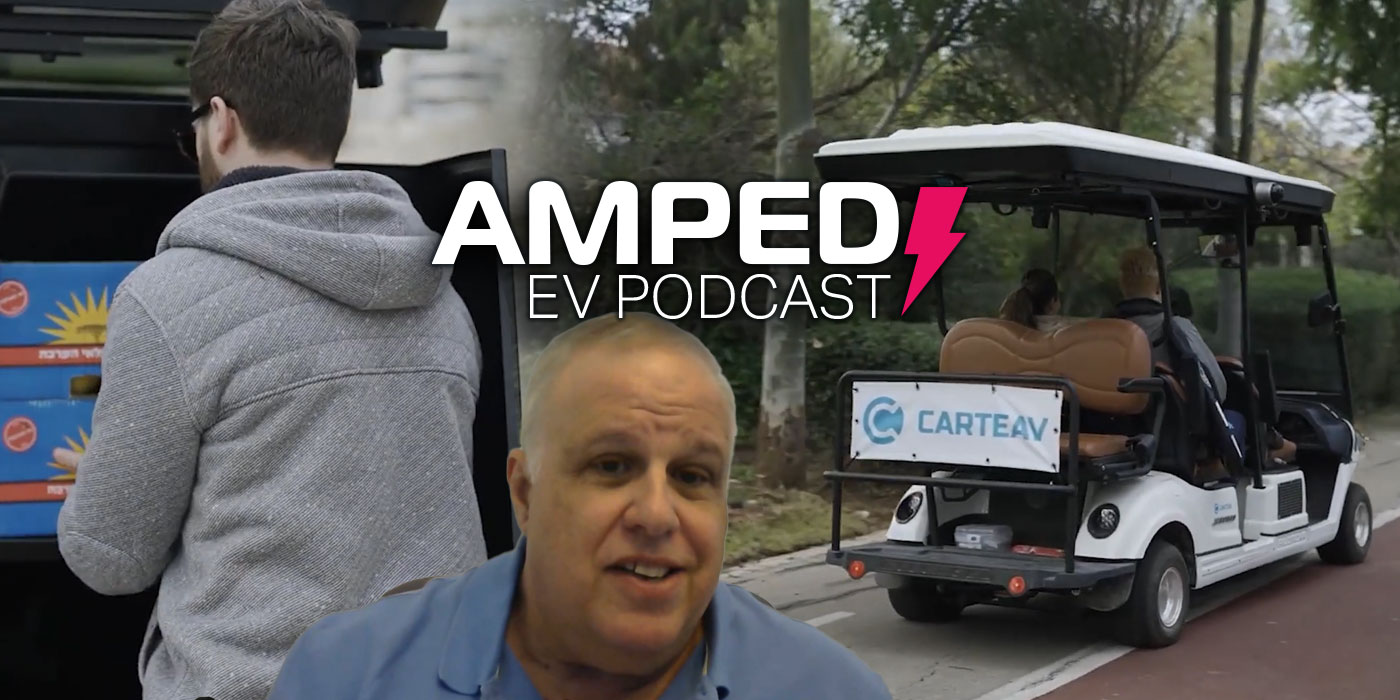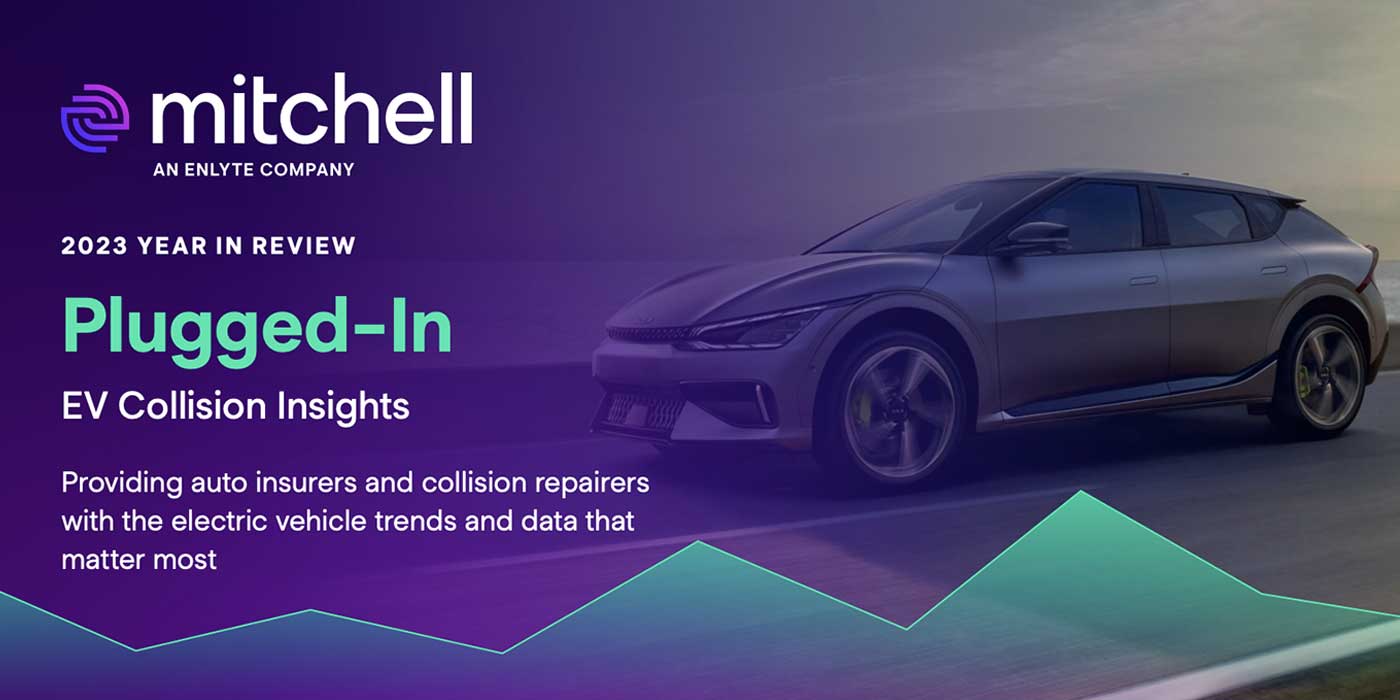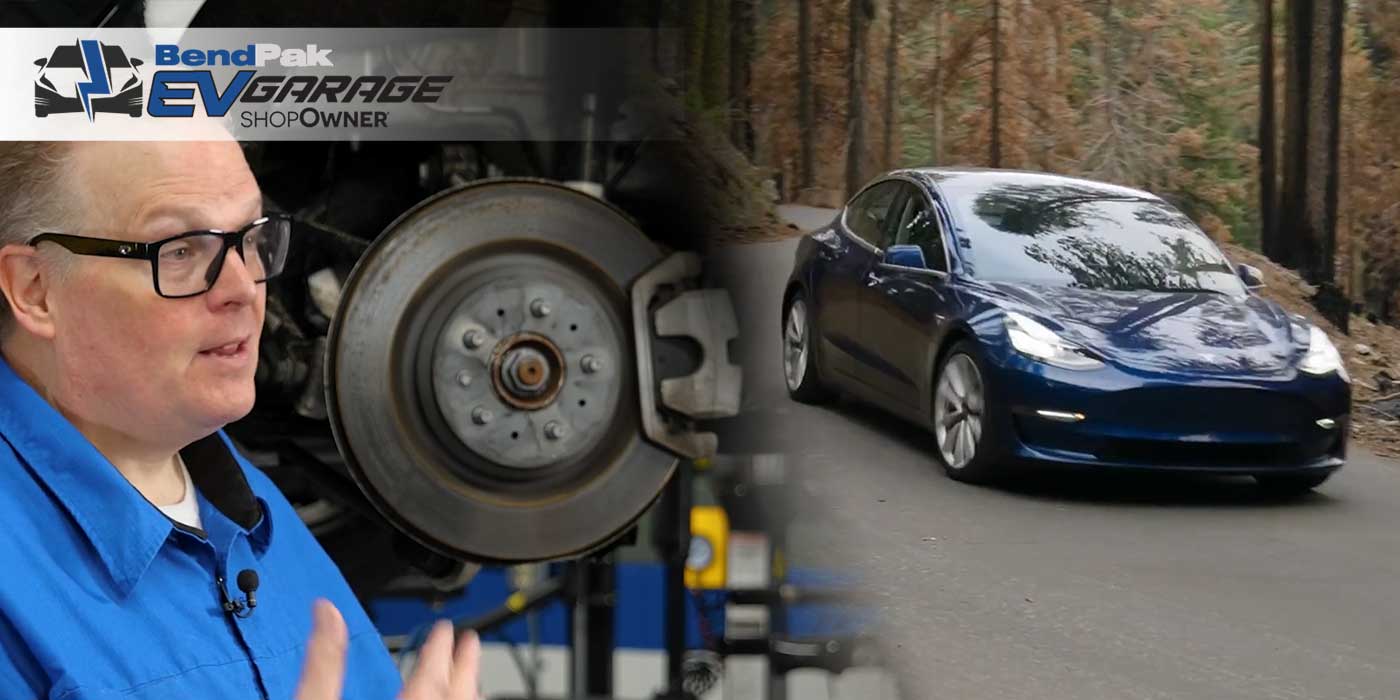Collisions happen, and even when no one is hurt, they’re a pain. Working with insurance, getting your car worked on, potentially being without a car for a while… none of it is fun. With an EV, this entire process can be even more problematic.
“I think [drivers] need to know that if they’re involved in an accident in their EV, they need to have a whole different set of expectations around what’s going to go on as it relates to repairing that vehicle and bringing it back to pre-loss condition,” says Ryan Mandell, the director of claims performance at Mitchell. “We say all the time that these vehicles are not simply just an electrified version of the internal combustion engine vehicle. These are really something that are wholly different because of the complete re-engineering of all the propulsion systems and the way that power is managed, and that very significantly changes the requirements for collision repair. And, we can’t simply just use the same kind of labor calculations to determine the number of days it’s going to take to repair.”
On this episode of The Amped EV Podcast, Mandell walks us through some of the latest data surrounding EV collision work, the lack of available data and standardized repair formulas for EVs, and how the economics of EVs affect repair costs.
Want more of The Amped EV Podcast? Click here.
Here’s a transcript of the show:
David Sickels: Hello and welcome back to the Amped EV Podcast. My name is David and I am the editor for The Buzz. And today we are talking about EV collisions. It’s something that happens. We don’t want to admit it, we don’t want to talk about it, but it happens. The problem is that there’s a lot of data out there about collisions on ice vehicles and how long it might take when you send that car into the shop to get your car back and what kind of work they need to do and how much it’s going to cost, all these different things.
With EVs, yeah, the data’s out there, but there’s not nearly as much of it. EVs just haven’t been on our roads quite as long, but thankfully there are experts out there that can help us answer some of those questions. So today we are talking with Ryan Mandell. He is the director of claims performance at Mitchell. Let’s get to the interview. Ryan, it’s great to meet you. Thanks for being on the podcast with us today.
Ryan Mandell: Thanks so much for having me. I’m super excited to be here and talk about this topic today with you.
David Sickels: Yeah, yeah, me too, me too. This is a really, really important one for people. I wanted to bring up some of the more recent research that Mitchell has put out here talking about the EV collision claims frequency and how that seems to be growing. Now, I don’t want to go through this thing piece by piece with you here today, but I would encourage anybody who is interested in EV to definitely check it out because there’s a lot of really, really interesting statistics in there. One question I did have for you though, based on that research, what would you say is maybe the number one thing that consumers need to know about owning an EV in regard to claims and repairs and things of that nature?
Ryan Mandell: Yeah, I think they need to know that if they’re involved in an accident in their EV, that they need to have a whole different set of expectations around what’s going to go on as it relates to repairing that vehicle and bringing it back to pre-loss condition. We say all the time that these vehicles are not simply just an electrified version of the internal combustion engine vehicle. These are really something that are wholly different because of the complete re-engineering of all the propulsion systems and the way that power is managed, the way that you achieve performance in these vehicles.
So, while they may look similar on the outside, obviously once you get into the mechanics of them, and of course the digital infrastructure of these vehicles, they’re completely different. And, that very significantly changes the requirements for collision repair. And we can’t simply just use the same kind of labor calculations to determine the number of days it’s going to take to repair. There’s ways that we’ve gone about that for years, dividing the number of labor hours by four, and that kind of gives you the number of days to repair. But with an EV, it really is quite different.
You have to manage so many different systems on these vehicles as it relates to the repair, especially the high-voltage battery. And, while that definitely adds labor time to the overall repair process, it also adds additional delays in terms of getting that work done. So, I would say to any consumer that has their EV going into a collision repair shop, you’re probably going to be looking at a lengthier repair time than you would typically be used to in any other vehicle that you might have had in an accident prior.
David Sickels: And, you had mentioned in the past there were different formulas you could try to use. Has the EV industry come up with anything like that at this point or is it too early to say? Or does it really just depend on the severity of the accident?
Ryan Mandell: I think it’s very dependent on the vehicle requirements, the specific requirements of that vehicle, and I think we’re seeing that kind of throughout the industry as a whole, but more specifically to EVs. So I don’t think there is a EV specific formula that exists for being able to predict that outside of traditional methods that we’ve used, but I think what we’re seeing when we look at our data in terms of cycle time for when these vehicles are in a repair facility is to normalize all the different variables. And we try to just look at maybe drivable vehicles, 2018 multiyear or newer things like that, we typically see an EVs going to have about two additional days worth of time in the shop compared to all other propulsion types.
David Sickels: Interesting.
Ryan Mandell: So I think that’s really a direct function of a couple different things. Number one, again, managing that high voltage battery. In many cases, the OEMs will require that that battery actually be completely removed from the vehicle during the course of repairs, depending on what’s happening with that repair. So if the vehicle’s getting welded on, that battery can’t be in the vehicle. Some manufacturers require the battery to be removed if it goes into a paint booth because it can’t be subjected to the high temperatures in a paint booth. So it depends on the specifics of what has to happen during the course of repair.
David Sickels: Very interesting. So based on all of that, what is the biggest hurdle for the collision industry when working on an EV?
Ryan Mandell: I think training is number one. I think that is going to be the biggest roadblock that shops are facing is being able to stay properly trained on all of these vehicles and ensure that not only are they doing safe and proper repairs and quality work on these vehicles, but that they’re keeping their technicians and their employees safe when they’re working on these vehicles. This is a lot of energy that if managed improperly can cause devastating results if it’s not being handled properly. So I think that requires an investment, and it definitely requires an investment not only monetarily but in time. And for an industry that is struggling to, I think capture new technicians to the trade and to retain existing technicians, I think that becomes a big challenge. And you definitely have to have the resources again, not only in terms of financial resources, but resources of time as well.
David Sickels: Got it. Got it. When we’re talking about time, what is taking so much time when the vehicle is in the shop? Is it the fact that you have to remove the battery for so many of these other processes to even begin those or is there a specific thing that is really adding on you? You had mentioned two days at one point. Is there anything that comes to mind that specifically is adding that extra time in the shop?
Ryan Mandell: Yeah. So, I think the big thing we can point to from a data perspective is certainly the operations surrounding the battery, de-energizing the vehicle properly, the additional labor that takes, and again, potentially removing the battery. But I would also say, and we’ve heard a lot of stories over the years about parts delays with all vehicles lately, but especially with some of these newer electric vehicles, especially the startup brands, where there’s not as mature of a supply chain in place in terms of relationships with tier one suppliers. And so that can be a challenge with some of these vehicles. It’s a new platform.
And, so, I think anytime you have a new platform, regardless of the powertrain you are liable to run into parts shortages and lack of availability of replacement parts. And especially with these electric vehicles, we’re talking about mostly newer vehicles here. The average age of an electric vehicle that’s being repaired in a collision center is newer than 2020. So we’re talking several years newer than the average internal combustion engine vehicle. So you don’t have the same availability of recycled parts, of aftermarket parts that could potentially supplement that supply chain. So I think the lack of availability of parts is causing some of that additional cycle time as well in addition to the labor operations that you’re finding.
David Sickels: Sure. And we’re seeing that in a lot of different applications now, not just EVs, but in heavy duty as well. I mean, all kind of sectors of the aftermarket we’re definitely seeing that. I did want to ask another data point and some of your more recent research talking about the expense of repairing an EV tends to be a little bit higher than it would be for an ice vehicle. Why do you think that is? Is it really because it’s kind of a more specialized thing right now, only certain technicians are able to do it or where is that extra expense coming from, in your opinion?
Ryan Mandell: Yeah, it actually comes down to something I think is relatively simple, and I think it’s just the pure economics of the vehicle is one of the biggest driving factors. When we look at the average actual cash value of an EV compared to an internal combustion engine that’s being repaired, the EV has a $20,000 higher ACV. So when you think about a vehicle that’s just worth more, it’s like any other vehicle, you just have more room to actually be able to fix the vehicle before start getting close to a total loss write off.
So, just the economics themselves of the vehicle, the fact that these are more valuable vehicles means that you’re going to be able to write a higher dollar repair before it gets totaled. Now, if we were to look at more of an apples to apples type of scenario, then I think that’s where we start looking at, again, the labor functions. Where we see the biggest difference is in the labor, and that’s really, I think, attributed primarily to dealing with that high voltage battery. There’s going to be more operations on an EV as opposed to an internal combustion engine vehicle. If you look at just the same pattern of damage, you’re going to have to do more with the electric vehicle just to be able to fix it.
Again, if you use the battery as an example on internal combustion engine vehicles, you have to disconnect the battery, but you’re talking a crescent ridge and 10 minutes of time versus using a specialized scissor lift to technicians to have to get the vehicle up on a hoist, remove this 1,600 to 2,000 pound battery, protect it, isolate it, make sure it’s de-energized. There’s a lot more that goes into these operations. So I think that’s the big driver when you look at kind of like for like, but just the pure economics alone are going to drive a higher cost in the electric vehicles compared to an ice.
David Sickels: Got it. That makes sense to me. Totally. Now this is just some speculation on my part, but I would guess because Teslas tend to be one of the more frequent EVs that you see out on the road, that is probably what a lot of technicians working on EVs have experience working on. As other manufacturers start to get in the mix a little bit more, proliferate the roads a little bit more, do you think that is going to be, I don’t want to call it a problem, but it’s going to change how the technicians know how to work on an EV or is every EV kind of standard because there’s less moving parts and one you kind of know them all?
Ryan Mandell: Yeah, I think it’s only going to benefit them to see more diversification of the models that are on the road, primarily because I think it’s going to provide greater exposure to the types of operations that technicians are going to be faced with. Are all EVs created equal in terms of how they have to be handled? No, I would say there’s certainly not. However, there is a similarity in terms of the platform and the construction of an EV where all EVs today essentially are built on this skateboard type platform where the battery is kind of at the floor of the vehicle and you have motors and powertrain that are kind of conjoined together at different parts of the vehicle.
So, I think those similarities will exist, and I think it’ll just take some time for this to mature in the marketplace. But as technicians are exposed to a wider array of these vehicles, I think it becomes less, taboos not the right word, but it becomes less of something that is out of their comfort zone when these vehicles come into their shop. So I think that will be a benefit and again, as more models enter the marketplace you’re going to see Tesla’s market share start to I think get more evenly spread out.
And, again, no, I don’t think that’s any fault of Teslas, I think it’s just consumers have a lot more options now at different price points. And I think the automakers have committed to this strategy of electrification going back a decade or so, and now we’re starting to see it come to fruition in terms of what’s actually available to consumers. And as that price parity starts to come into the market more over the next decade, that’s when I think you really start to see more diversification of the models that are going to be on the road.
David Sickels: That makes sense. Well, Ryan, thank you so much for taking the time to speak with us today. I really appreciate your time here. And again, I do want to encourage people to look at Mitchell’s research on EVs. A lot of interesting stuff that we didn’t have time to get into today, but it’s really, really great and you’re coming out with new research all the time. So again, really appreciate it. Thank you.
Ryan Mandell: Thank you so much. It’s been my pleasure. This was a ton of fun.
David Sickels: Take care. Okay. That was a great interview. I could probably pick Ryan’s brain all day about this kind of stuff. One of the things he said that really got my attention was managing your expectations. If you own a EV, it has to go into the shop. You need to understand that it’s probably going to take a little bit longer. And he was saying kind of on average two additional days is what you can expect as compared to an ice vehicle. I think that sounds about right. Also, he’s talking a lot about training technicians.
This is something that we hear from people all the time. It’s very, very new. A lot of technicians, they just don’t know how to work on these vehicles and having that training is very, very important. As they begin to proliferate our roads more and more, these are going into the shop and technicians are going to need to know how to work on these vehicles. This was a great episode. Thanks for joining us everybody. Hope to see you again soon. See you next time.






